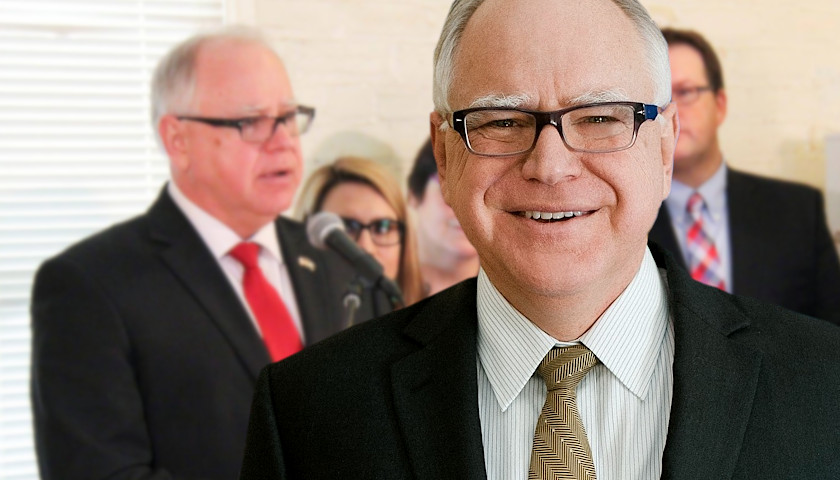Gov. Tim Walz (D-MN) will have to reexamine his budget proposal “line by line” after Thursday’s budget forecast came up $492 million short of November’s estimated $1.5 billion surplus.
It’s only been nine days since Walz unveiled his first budget proposal for the 2020-2021 biennium, which capped out at $49.5 billion. But after Thursday’s announcement, Walz will need to do some trimming.
“Minnesota’s budget and economic outlook has weakened since November. The projected balance for the upcoming biennium is $1.052 billion, which is $492 million less than the November forecast,” Minnesota Management and Budget revealed in a press release.
“Slower projected economic growth and lower observed collections compared to prior estimates result in a reduced revenue forecast throughout the budget horizon,” it adds.
During a Thursday press conference, Walz acknowledged that he’ll need to “go back through line by line” with his commissioners, but insisted that “today’s forecast validates the approach we proposed in our One Minnesota budget.”
“Our budget looks to the future—with investments in education, health care, and community prosperity—and that’s exactly what we need to do when facing slower economic growth,” he wrote on Twitter.
Today's forecast validates the approach we proposed in our #OneMinnesota budget. Our budget looks to the future — with investments in education, health care, and community prosperity — and that’s exactly what we need to do when facing slower economic growth.#mnleg #mngov https://t.co/uZya7hKdm0
— Governor Tim Walz (@GovTimWalz) February 28, 2019
“It’s a cautionary tale, clearly, when you take a half a billion dollars out of the projection for 2020-2021,” Minnesota Management and Budget Commissioner Myron Frans told reporters.
Senate Republicans responded to the final forecast by urging Walz to avoid making any permanent spending commitments or instituting tax increases, such as the controversial gas-tax hike.
“The economists and budget experts said today the economy is slowing down and there will be less revenue for the state going forward,” Senate Majority Leader Paul Gazelka (R-Nisswa) said. “Knowing that, the last thing we should do is add permanent spending commitments to the state budget. And, in order for the economy to grow, we need to be careful about any new tax increases foisted on the very people who will drive our economy in the future—the middle class.”
House Minority Leader Kurt Daudt (R-Crown) said Minnesota is “starting to see the consequences” of its “status as a high tax state.”
“Our economy is growing, wages are up, but our sky-high tax rates are choking state revenues and we’re now looking at a deficit in the next biennium,” he said. “Democrat proposals for huge permanent spending increases and tax hikes on gas and trips to the doctor will only make this problem worse. Our economy grows when Minnesotans have more money to spend—House Republicans are going to focus on helping people keep more of their hard-earned money and growing the economy that way, rather than taking more money for government.”
The question remains: why would Walz release his budget proposal nine days before the final budget forecast is released?
According to the Center of the American Experiment, an “arcane statute” from the 1930s requires Minnesota’s governor to submit his proposal to the legislature by the end of January, or three weeks thereafter for newly elected governors.
The full budget and economic forecast can be read here.
– – –
Anthony Gockowski is managing editor of Battleground State News and The Minnesota Sun. Follow Anthony on Twitter. Email tips to [email protected].
Photos of “Tim Walz” by Tim Walz.




